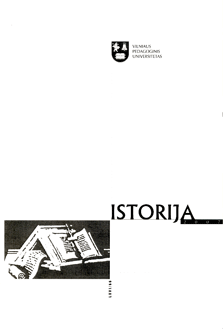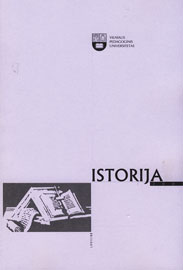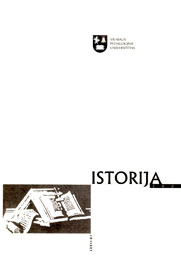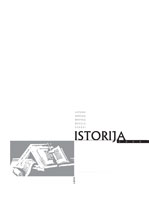Pinigų cirkuliacijos Lietuvoje bruožai 1915−1919 m.
Author(s): Linas Kvizikevičius,Saulius Sarcevičius / Language(s): Lithuanian
/ Issue: 4/2007
Keywords: Currency Circulation; Lithuania; 1915−1919
The article aims to evaluate and characterise the monetary circulation and its structural changes in Litbel, the Red Army controlled zone, that existed for several months in the territory of Lithuania and Belarus during the years of the First World War and in 1919. The article also throws some light on a new factual source, i.e. a hoard of money discovered in Vilnius during the archaeological research in 2004. Some financial and monetary issues were researched or, to varying degrees, touched upon in the works of historians and economists who dealt with the historiography of Lithuania underwent several stages of development. Till July-August 1917, a mixed monetary system had been formed throughout the entire territory of Lithuania. The main currency was the Russian Imperial money and German marks, which were the mostly valued by society. Alongside, the Ost Rubel, functioning as a secondary currency, enriched the monetary circulation. Insignificant quantities of other European and US currencies were also in circulation. Starting with July-August 1917, significant circulation changes occurred, as the Russian Imperial currency was ousted from circulation; it was replaced by German currency. From late 1917 until late 1918-early 1919, alongside the principal monetary system, circulating in Lithuania, the remainder of the Russian Imperial currency which occupied a secondary currency position, began to be used more intensively and its quantity fluctuated in a regressive order.
At the beginning of 1919 (until April), a second, structurally different, money circulation system appeared in the eastern part of Lithuania (Litbel), which was occupied by the units of the Red Army. Its principle currency in January 1919 consisted of Russian 1917 and Imperial currency alongside an insignificant percentage of German currency: the Ost-Rubel and Ostmark as well as locally issued currency (in Panevėžys). The principal circulating currency in the Litbel territory essentially consisted of money which could not be converted into other currency. This is also clearly reflected by the hoard discovered during archaeological research in Vilnius in 2004. A glass beer bottle, containing 148 Russian Imperial, Duma, and the Provisional Government banknotes (total value being 4,970 roubles), was discovered. The majority (2,820 roubles or 56% of the total value) consisted of 20 and 40 rouble denomination 'kerenka' treasury notes issued in 1917 by the Russian Provisional Government. A glass box held 564 coins (560 of which were silver with a total weight of 1,457.16 gr.). These consisted of 496 (89%) Russian Imperial, 66 (11 %) German, and 2 Austrian coins. The majority were small denomination coins: Russian 10, 15, and 20 kopeck coins and German half marks, which, in the author's opinion, reflects the then circulation situation, i.e. a shortage of large denomination freely convertible coins. The coins of 1913-1915 were the most represented (248) in the hoard...
More...




